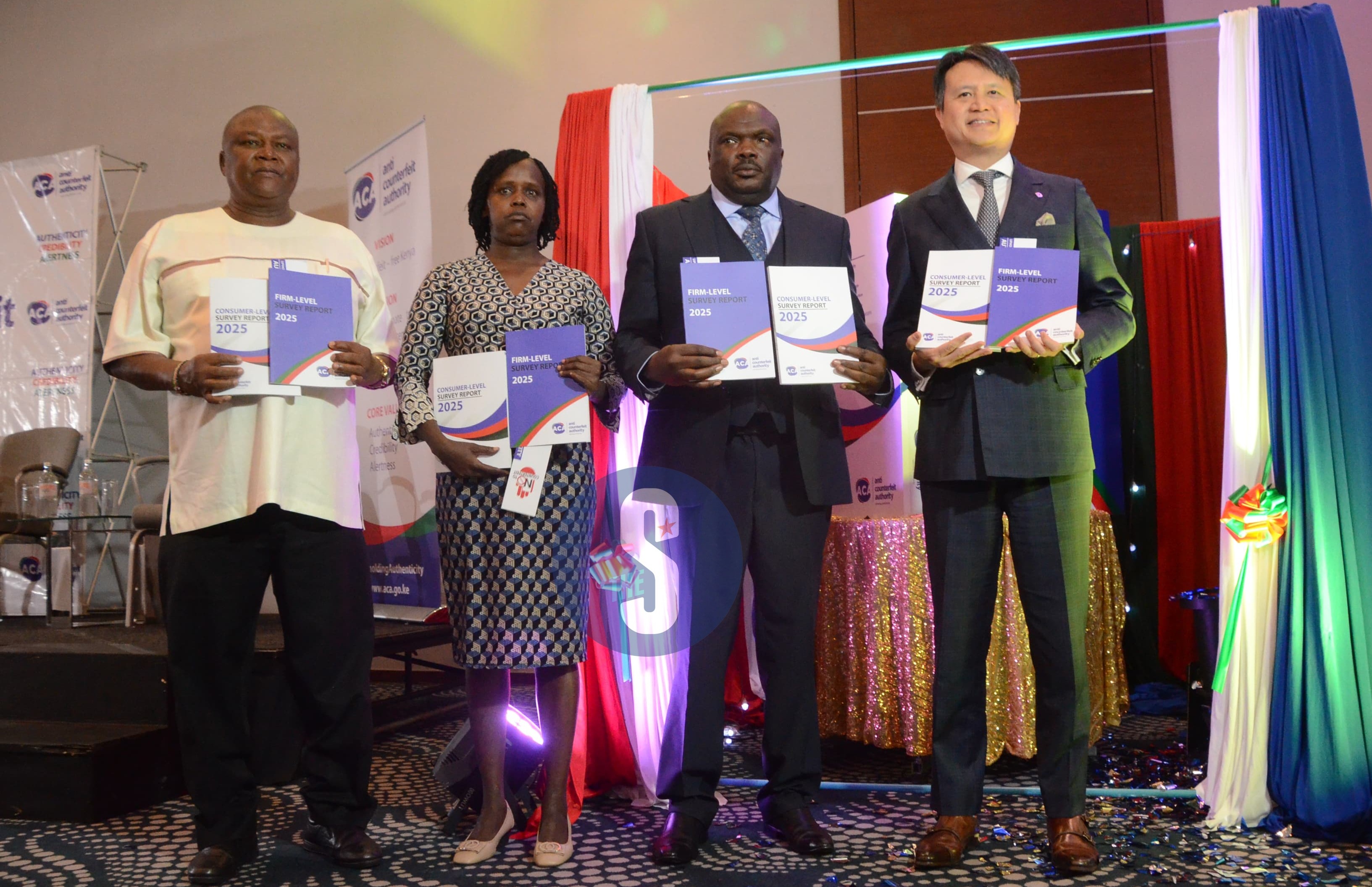
ACA marks World Anti-Counterfeit Day with warning
Counterfeiting costs Kenya an estimated Sh153 billion annually.
China was identified as primary source of both online and offline counterfeit products.
In Summary

Audio By Vocalize
 Joseph Mbeva director of industries MITI, ACA board member Neddy Kiptoo, executive director Dr Robi Njoroge and World Intellectual Property Organization director general Daren Tang displaying a report in celebration of World Anti-counterfeit Day 2025 at Radisson Blu hotel, on June 6, 2025. /DOUGLAS OKIDDY
Joseph Mbeva director of industries MITI, ACA board member Neddy Kiptoo, executive director Dr Robi Njoroge and World Intellectual Property Organization director general Daren Tang displaying a report in celebration of World Anti-counterfeit Day 2025 at Radisson Blu hotel, on June 6, 2025. /DOUGLAS OKIDDY
Kenya loses approximately Sh800 billion each year to counterfeit goods, according to a new report.
This loss accounts for around 9 per cent of total illicit trade, as reported by the Anti-Counterfeit Authority (ACA).
According to the Consumer-Level Survey Report 2025, 83.85 per cent of Kenyans are now aware of counterfeit products—an increase of 28.05 per cent compared to 2021.
“The study was conducted to assess the awareness, experiences, and attitudes of consumers towards counterfeit goods in Kenya,” the report stated in part.
However, this awareness does not always result in informed decision-making.
“While general awareness has improved, many consumers still struggle to distinguish between genuine and fake products,” explained lead researcher Dominic Ajwang.
Speaking during the World Anti-Counterfeiting Day celebrations on 6 June 2025, ACA Executive Director Robi Njoroge noted that the authority is implementing a system requiring importers to register consignments at the source country. This measure aims to improve the tracking and control of counterfeit goods.
“This is not just about lost revenue,” Njoroge said. “It is about lives, jobs, and the integrity of our markets—especially in the case of counterfeit medical products, which he described as a ‘death sentence’.”
Njoroge emphasised that counterfeit goods not only harm the government and legitimate businesses but also endanger consumer health and safety, as such products are often of inferior quality or potentially hazardous.
The study further revealed that 60 per cent of counterfeit purchases occur through street vendors, while 31.27 per cent take place online.
Jumia and Facebook were identified as the leading platforms where counterfeit products are sold.
“Street vendors still dominate, but the tide is turning. The battleground is now the online marketplace,” said Ajwang.
“If we do not focus resources on this shift, we will lose the war before we even understand the battlefield.”
In terms of origin, China was identified as the primary source of both online and offline counterfeit products.
However, Kenya and Uganda were also cited as significant sources of offline counterfeit goods, indicating that local manufacturing and distribution are contributing to the problem.
The study also explored the motivations behind counterfeit purchases.
Low pricing emerged as the key driver, with consumers prioritising affordability.
“Kenya is a country of affordability,” Ajwang noted. “People often buy what is available and affordable, even if it is not authentic.”
Njoroge called for the development of research-based policies and strategic campaigns focused on consumer education and stricter oversight of online platforms.
“The way forward must be scientific, targeted, and data-driven. We cannot fight a dynamic problem like counterfeiting with outdated tools,” Ajwang added.
The survey covered eight counties—Nairobi, Busia, Kisumu, Mombasa, Garissa, Machakos, Nyeri, and Nakuru—representing Kenya’s major regions.

Counterfeiting costs Kenya an estimated Sh153 billion annually.